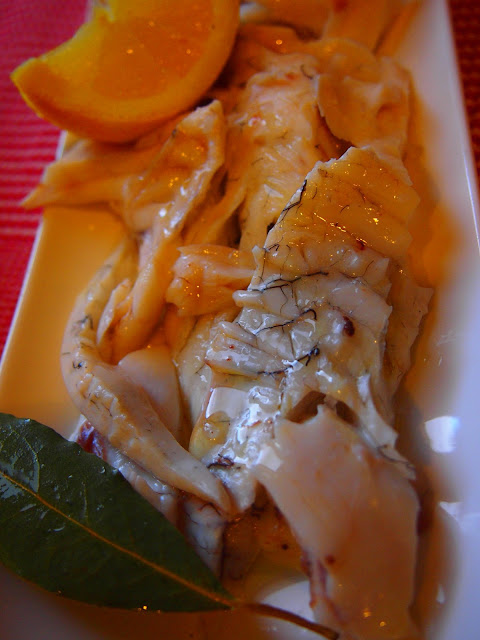Rustic No-Knead Bread and Focaccia Bread
For the sake of this blog entry, I will argue that you can make bread that
is so good and so easy you may very well want to live on bread alone.
I have
spent most of my life chasing the taste and texture of those round Transylvanian
loaves of bread on which I so happily grew up, but alas have had little luck.
The vivid memory of both my maternal and paternal grandmothers bringing these
massive spherical loaves to their chests and slicing them between their ample pendular
apron-donned bosoms is tattooed in my brain. That memory is what bread means to
me; comfort, nourishment, and warmth personified. I came close to this ethereal
experience once I began making my own bread. There is a German saying that a
woman is fit to marry once she has mastered slicing bread up against her chest…
as yet, I still cannot slice bread between my bosoms.
Here is the super simple, no knead bread recipe I have happily executed
about once a week for the past two years, so you know it’s not just an
occasional fling. Just one very important thing:
you will need a cast iron pot
with a lid!
Rustic No-Knead Bread
Ingredients:
3 cups flour
1 ¼ tsp. salt
¼ tsp. dry yeast
1 ½ cups warm water
·
Place the flour, salt, and dry yeast into a big
bowl and give it a mix with your fingers.
·
Add the warm water to the bowl of dry
ingredients and mix with your hand. No need to knead (hah hah), just use your
fingers to bring everything together (this is really just a 10 second affair).
·
Once the dough has come together cover it with a
tea towel or plastic wrap and place in a warm place, I use my water closet.
·
Leave to rise for at least 12 hours. I find it
practical to do this before I head off to bed, as it only takes 3 minutes to
prep, and leave the dough to rise overnight.
·
In the morning I preheat the oven to 250 C or
500 F with the cast iron pot inside.
·
Meanwhile, flip the risen dough out of its bowl
onto a clean work surface that has been lightly dusted with flour and flatten
it out a bit with your hands.
·
Fold in
the corners of the dough towards the middle, like an envelope, then sprinkle
the top with some more flour.
·
Once the oven is as hot as it can get, take out
the scorching hot pot and quickly transfer the dough to the pot, folded sides
up. Cover with lid and pop back into the oven to bake for 30 minutes, then
remove the lid and bake for another 20-25 minutes.
Whenever I cut through the bread's thick crusty
exterior and down to its warm and moist interior, I am always astounded by its infinite power
to please and comfort like nothing but real hand-made bread can.
Focaccia Bread
Now that you have mastered a simple no knead bread, you are ready for more
advanced level bread-works. I say advanced because there are a few more steps,
and a bit of kneading but it’s still damn easy and oh so satisfying. The good thing
is, there is less waiting around for the dough to rise.
Ingredients:
500g strong white flour
5g powdered dry yeast
10g salt
325ml warm water
1tbsp. olive oil (plus extra for coating dough)
1 tbsp. chopped rosemary
coarse salt
·
With your hands mix flour, yeast, salt and water
in a bowl to form a sticky dough
·
Add olive oil and mix in with fingers
·
Turn dough onto clean counter and knead until
smooth (circa 10 min)
·
Shape the dough into a ball and coat with olive
oil
·
Cover with plastic wrap and leave to rise in a
warm place for 1 hour
·
Once doubled in size, tip over onto the counter
and mould it into a rectangle
·
Transfer onto an oiled rectangular baking tray, pull the dough out to fill the tray, and push dough into the corners
·
Cover tray with towel and leave to rise for half
hour
·
Meanwhile, preheat oven to 250 C or 500F
·
When bread has puffed up, poke holes into it
with your fingers until the entire rectangle of dough is dimpled
·
Drizzle over with olive oil then sprinkle with coarse
salt and chopped rosemary
· Pop into the oven to bake for 10 minutes, then
turn oven down to 200C or 400 F and bake for 10 minutes longer
Enjoy with some Italian cold cuts, cheese or antipasti.



















































